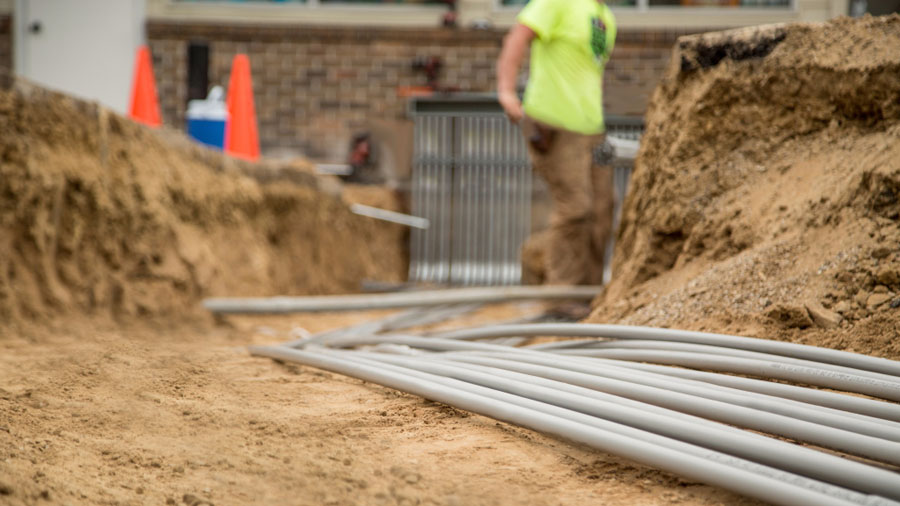These recommendations propose methods for installing fuel system devices, taking into account industry standards and manufacturer requirements.

In the fuel system, measuring instruments, such as probes, sensors, are used to monitor the storage of fuel and its use, observing the requirements of the environment. These measuring instruments are usually low voltage (intrinsically safe) devices to ensure safety in these fuel storage tanks.
Local codes and standards require that these low-voltage devices be maintained separately from the high-voltage sources of the fuel system, such as 110V distributor handle signals and 220V turbine pump wiring.
Inside the automatic pressure gauge and in the conductive gutters, separation is usually performed between small and high-voltage cables through a physical barrier, but if possible, it is recommended to use separate wire gutters for small and high-voltage cable laying.
In addition to safely laying the cable in the electrical room, measuring instruments also require good wiring, which must be followed to the monitoring site to ensure data integrity.
If possible, it is recommended to maintain at least 12 inches of physical separation between low-voltage and high-voltage cable laying in underground pipelines inside well-laid ground.
When the separation makes its way to the crossover channels, they should intersect at an angle of 90 degrees to avoid as much parallel low-voltage cable as possible.
If proper physical separation or crossovers of underground cable laying cannot be preserved, it is recommended to use steel channels on cables with high voltage, so that these recommendations suggest methods for installing fuel system devices taking into account industry standards and manufacturer requirements.
In the fuel system, measuring instruments, such as probes, sensors, are used to monitor the storage of fuel and its use, observing the requirements of the environment. These measuring instruments are usually low voltage (intrinsically safe) devices to ensure safety in these fuel storage tanks.
Local codes and standards require that these low-voltage devices be maintained separately from the high-voltage sources of the fuel system, such as 110V distributor handle signals and 220V turbine pump wiring.
Inside the automatic pressure gauge and in the conductive gutters, separation is usually performed between small and high-voltage cables through a physical barrier, but if possible, it is recommended to use separate wire gutters for small and high-voltage cable laying.
In addition to safely laying the cable in the electrical room, measuring instruments also require good wiring, which must be followed to the monitoring site to ensure data integrity.
If possible, it is recommended to maintain at least 12 inches of physical separation between low-voltage and high-voltage cable laying in underground pipelines inside well-laid ground.
When the separation makes its way to the crossover channels, they should intersect at an angle of 90 degrees to avoid as much parallel low-voltage cable as possible.
If proper physical separation or crossovers of underground cable laying cannot be maintained, it is recommended to use steel channels on high voltage cables to provide a barrier between low and high voltage cables.
In addition, installers must maintain a physical separation of the measuring devices in the fuel storage and fuel containment according to the manufacturer’s requirements, usually at least 12 inches from the submersible pump or other fuel system equipment, which may compromise the monitoring operation.

Increase the distance between channels on larger sections, especially on longer parallel cable routes.
Data integrity may be compromised by electrical interference of the signal to and from these measuring instruments if good wiring methods are not followed.
In the fuel system, electrical noise can be generated by several types of fuel system equipment, including lights, compressors, underwater vehicles and other high-voltage devices.
To reduce electrical noise from these measuring instruments, always comply with local code requirements, industry standards, and the manufacturer’s installation requirements for properly grounding the equipment to the electrical panel and grounding the system.
Also comply with local code requirements, industry standards, and manufacturer installation requirements to properly protect the signal cable connections to these measuring instruments. Large fuel systems
In addition to the devices and systems being added to fuel systems in recent years, fuel systems continue to grow.
Larger systems inherently require lower and higher voltage cables running throughout the fuel system, which will require even more consideration of the above wiring methods to ensure data integrity.
In these larger systems, consider extending the cables in all areas exceeding 12 inches (especially with longer parallel cable runs), or use steel channels on high voltage cables to provide a barrier between low and high voltage cables over the fuel system.

A company that is part of the “System Group” holding. The company’s divisions are headquartered in Moscow (Russia) and Kiev (Ukraine).
Copyright © Ligir 2023 All rights reserved. Website created by WEB-studio In-Look